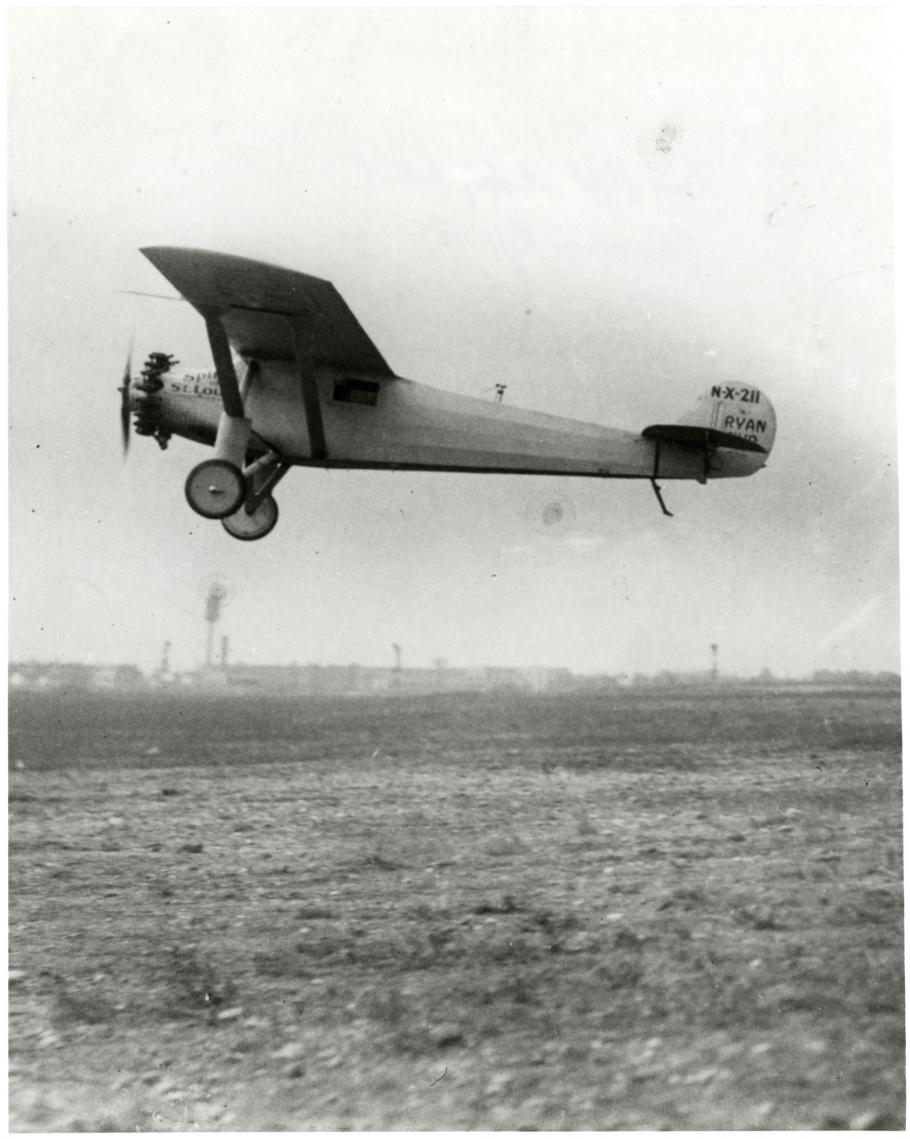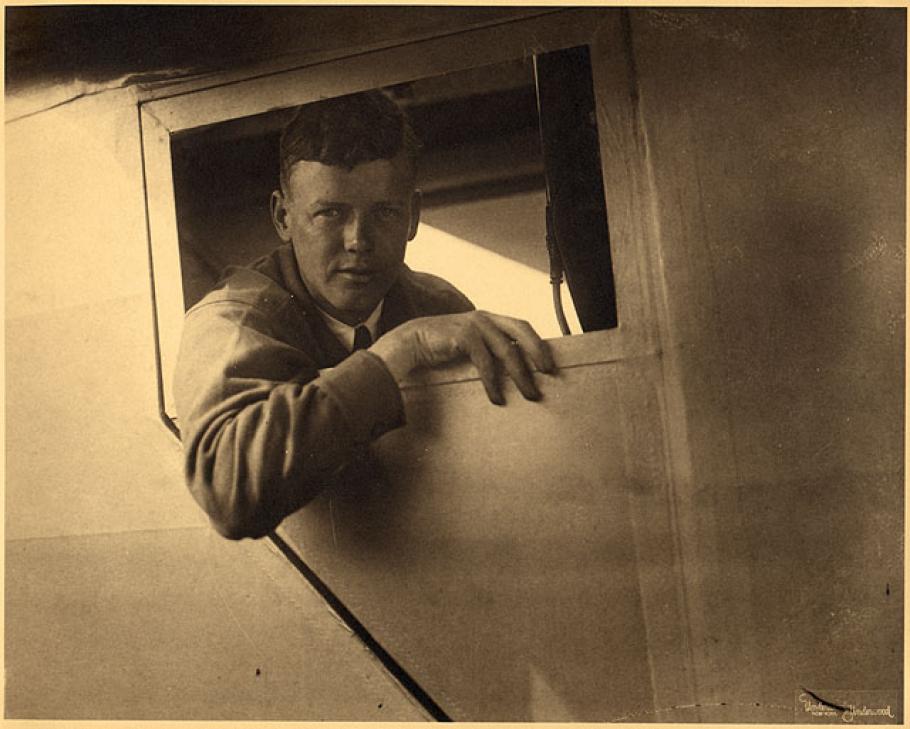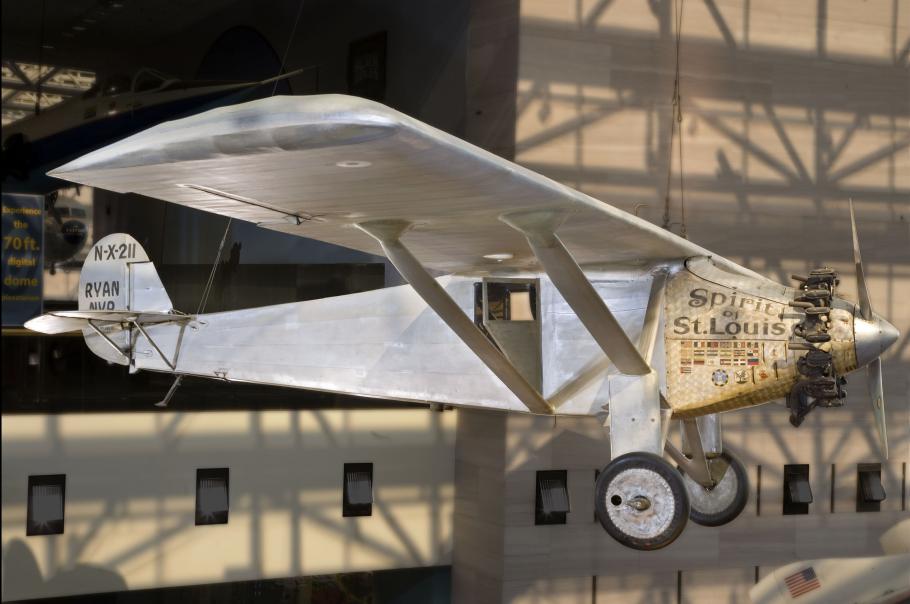This, the 87th anniversary of Charles Lindbergh’s epic solo, non-stop flight across the Atlantic in 1927, gives us an opportunity to revisit the diminutive Ryan airplane that carried the twentieth century’s best known aviator into history. The Ryan NYP Spirit of St. Louis has been in our care since April 30, 1928, when Lindbergh flew it to nearby Bolling Field, in Washington, D.C. where it was accepted into the Smithsonian’s collection of national treasures. Over the next few days, it was dismantled and physically towed through the streets of the nation’s capital to the Arts and Industries Building where it was lifted up and suspended. The Spirit has been on display at the Smithsonian ever since. It was moved once in 1948 to make room for the arrival of the original 1903 Wright Flyer and again in 1976 when it was installed in the National Air and Space Museum’s new building after a quick clean-up and conservation. Twice since then, the Spirit has been lowered, once in 1991 for a thorough inspection, and again in 2000 when it was moved out of harm’s way during a ceiling replacement project.
Just last month, Boeing announced a most generous donation of $30 million to the museum to promote our educational programs and to reimagine and reinvent our signature main hall. The gift will allow us to completely reinterpret what is now the Boeing Milestones of Flight Hall and, for the purpose of this conversation, will allow us to lower the Spirit to the floor once again and give it the detailed inspection and conservation it deserves. We hope that we find that it is still in excellent shape. It was well-made by a team at Ryan who cared deeply and personally for the well-being of its young pilot. The Spirit has been handled with great care since its arrival in the Smithsonian in 1928. The same can’t be said for its arrival in Paris a year earlier, on May 21, 1927.
After flying for more than 33 hours and well over 5,633 km (3,500 miles), Lindbergh arrived over Paris late in the evening. Paris was, and is, the “City of Light,” which made it easy for the exhausted young aviator to find his destination. His only problem was finding Le Bourget Airport in the dark. All he knew was that the field was somewhere northeast of the city. Cleverly he followed a line of lights that led in that direction. He assumed that no one would expect him so he carried several letters of introduction, just in case.
The letters weren’t necessary. The line of lights he was following was actually a chain of automobiles, with headlights blazing, fighting to get to Le Bourget before the gallant American landed. When he did land moments later, Lindbergh was immersed in a human wave of more than 150,000 exuberant well-wishers. In their excitement, the crowd swarmed Lindbergh and his aircraft. Lindbergh was rescued by noted French aviators George Delage and Michel Detroyat. The Spirit was not so lucky. Before airport officials and members of the French Air Force could cordon off the aircraft, souvenir hunters had grabbed at the aircraft tearing off pieces of fabric from the wings, fuselage, and tail. Deeply embarrassed, the French Air Force managed to move the Spirit to the safety of a nearby hangar where they patched the wings and replaced the fuselage fabric before Lindbergh returned several days later. They also replaced a small piece of fabric that had been removed from the right side of the rudder. One over-enthusiastic spectator cut-out the winged “R” insignia of Ryan Airlines, the manufacturer of the Spirit, and took it home. To this day, if you look closely, you will notice the winged “R” on the left side of the rudder, and the blank patch on the right. As for the missing “R” itself, one can only imagine that it still hangs above a fireplace somewhere in Paris.




